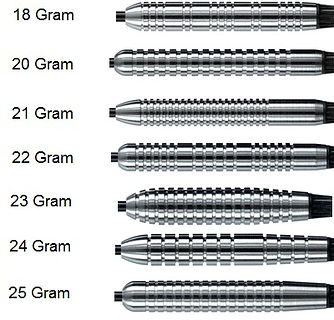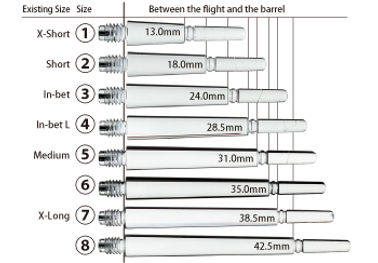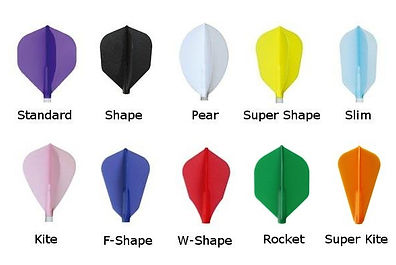
Start playing darts
Parts of a Dart




A dart consists of 4 parts (As displayed in the image), these parts are: the point, barrel, shaft and the flight. All of these parts have their own influence on the trajectory and the performance of the dart.
Point or Tip - There are two forms of point that you can get on a typical dart, one is a soft tip and the other is steel tip. The most common tip on a dart which you most probably have seen is the steel tip.
Some darts are available with retractable points, which have 1/4 of an inch play. When a dart makes contact with the board, the amount of "play" or "give" on the point enables the dart to make better contact with the board whilst also reducing the likelihood of the dart bouncing out of the board.
Soft tip darts are more commonly used with electronic dartboards.
Barrel - The barrel is the part of the dart that you hold when throwing. Barrels are produced in a variety of designs and weights, however typically they are made up of tungsten, steel or brass.
Tungsten is a highly dense material and it enables the barrel to be thinner compared to both steel or brass barrels that are of the same weight. Tungsten barrels allow for a tighter grouping of darts, grouping referring to the darts being in close proximity of one another (all together).
There are four basic shapes of barrel: straight, centre-weight, torpedo whereby the maximum width is where the barrel meets the point and bomb, which is very similar to the torpedo shape, however the maximum width is slightly further back.
Shaft - The shaft connects the barrel to the flight, some shafts have an O ring at the end of them, which is specifically to allow the flight to rotate. The O rings have no impact on the trajectory of the dart, however it enables the flight to turn if the dart lands very close to another dart on the board. The shaft enables closer grouping of darts and reduces the likelihood of bounce outs (dart bouncing out of board).
Shafts are available in a variety of sizes (See second image on the left).
Flight- The flight stabilizes the trajectory of the dart. Flights come in many different shapes and sizes, the larger flights have greater trajectory, however they encounter more air resistance or "drag".
Some of the names of the different types of flights available are: standard, fantail, combat, axis, pear and many others.